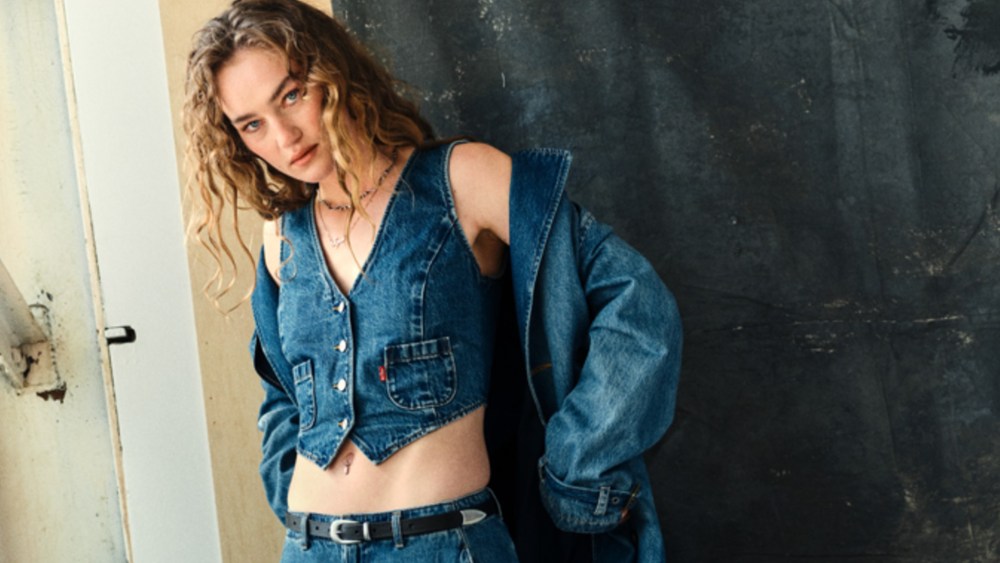When Michelle Gass took on the mantle of chief executive officer of Levi Strauss & Co. in January, she did more than take over a jeans giant that was sharpening its focus on its direct-to-consumer and women’s businesses.
She grabbed the reins just as the key U.S. market moved into a year bound to be disrupted by a distracting presidential election, which is just now starting to gear up.
“Uncertainty has become our new certainty. We know that there’s going to be uncertainty with the consumer,” Gass told WWD in an interview detailing second-quarter results with earnings that, as she said, “over delivered” and beat analyst expectations.
“We control what we can control and that is about delivering great product and great experiences,” Gass said.
You May Also Like
Otherwise, the CEO said the consumer was proving to be “resilient,” if cautious, in Europe, and ready to lean into the baggier, looser fits that now make up more than 50 percent of the company’s business.
Second-quarter net income tallied $18 million, or 4 cents a diluted share, and compared with losses a year earlier of $2 million, or flat on a per-share basis.
Adjusted earnings per share rose to 16 cents, up from 4 cents a year earlier and 5 cents ahead of the 11 cents Wall Street analysts estimated, according to Yahoo Finance.
Revenues for the three months ended May 26 increased 8 percent to $1.44 billion from $1.3 billion. Analysts were expecting revenues to be slightly higher at $1.45 billion.
But investors took a cautious approach — perhaps expecting Levi’s to turn in something more given the popularity of all-denim looks — and traded shares of Levi’s down 11.4 percent to $20.49 in after-hours trading on Wednesday.
Revenues in the Americas grew 17 percent to $712 million, while Europe was down 2 percent to $354 million and Asia was off 1 percent to $260 million.
Gass said the women’s business — which she has shined a big spotlight on — was a “big standout.”
Women’s was up 22 percent in Levi’s global DTC business, and up 30 percent in the U.S.
“We’re sharpening our focus and really amplifying our agenda here,” she said, noting that women’s was about third of the business today and will eventually account for half of sales.

Gass said “it starts with winning in bottoms” and then is expanded with more “denim dressing” pieces like skirts and more tops. Women’s Western shirts are up 40 percent for the brand.
“When you get the women coming in to buy, typically they’re buying male product as well, so it is a win-win for the total business,” the CEO said.
Levi’s direct-to-consumer sales increased 8 percent in the quarter. And while wholesale sales grew by 7 percent, that number was boosted by an approximately $100 million shift in wholesale shipments due to implementation of the companies’ enterprise resource planning system and also impacted by the exit of the Denizen business. Adjusting for those changes, wholesale sales fell 4 percent.
Gass, who before joining Levi’s as president in January last year was CEO of Kohl’s Corp., is also pushing hard to “pivot” Levi’s to become a DTC-first company zeroing in on its own stores and website.
That, she said, is “the biggest unlock” in the company’s strategy.
Nearly 47 percent of the company’s sales now come from the DTC channel, but that doesn’t mean Levi’s is walking away from wholesale, a business that’s been struggling across the industry.
“Our strategy is DTC first with wholesale as an amplifier,” Gass said. “DTC will be 55 percent of our business.”
That will still leave a big 45 percent chunk of the sales coming through outside players.
While fashion companies have rushed to build out their direct-to-consumer businesses and gain more control over how their brands are presented, it’s also a harder business to make money in.
But Harmit Singh, Levi’s chief financial and growth officer, said the DTC side is growing stronger.
“The wholesale business is more profitable at the [earnings before interest and taxes] level than the DTC business,” Singh said. “That is a fact that will remain for a long time.
“Having said that, we’re going to narrow the gap,” he said. “We’re just getting better at being a retailer.”

Some of those efforts can be seen in the company’s global productivity initiative, Project Fuel, that has Levi’s letting go of some of its owned and operated distribution facilities and working without side partners like GXO and Maersk for a more balanced approach.
The initiative led to $55 million in restructuring changes in the quarter, mostly to cover severance and post-employment benefits.
Singh said the decisions were “tough, but transformative” and that, “it’s like driving a car and changing the wheel at the same time. It takes a little time for us to transition and we’ll build that into our guidance.”
For the full year, Levi’s reaffirmed its earnings and revenue forecasts — implying that business will accelerate in the back half. Adjusted earnings per share slated to range from $1.17 to $1.27, including a 5-cent negative impact from the company’s new distribution and logistics strategy, increased marketing spend in the second half and currency headwinds.
Revenues are expected to increase 1 percent to 3 percent.



